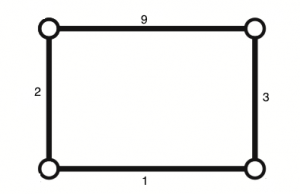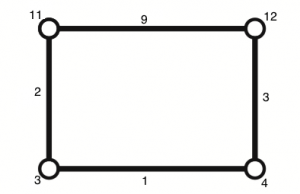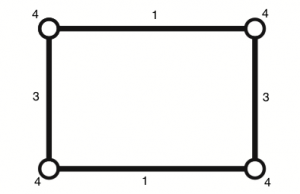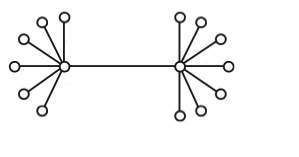Funerary-Network Analysis(July 15th, 2012)
Social Network analysis is a hot topic within both mathematics and the social sciences, but all of the research thus far has focused on identifying networks that exist within current communities. This leaves the majority of social networks that have existed throughout the history of the world outside of the realm of study. Therefore our proposal is to leverage the existing physical network data embedded in the graveyards around Boston to develop a model of the social dynamics of pre-revolutionary times.
Number Sense Evolution(February 27th, 2005)
There is much evidence for stronger number sense than previously hypothesized in animals ranging from monkeys to bears to fish, and much work has been done in measuring the development of number sense in human children. We are proposing to take this research even farther by studying
the complete evolution of number sense in a species, from its initial appearance in the beginning of life to its peak during maturation to its decline at the end of life. Such an ambitious study would seem to need its time frame measured in decades, if not centuries, except that our study subject will be the Mayfly. With a lifespan that varies from only 30 minutes to one day, we expect to be able to finish our study in a matter of days after funding is received.
Pratfall Equation(September 12th, 1999)
Physical comedy has shown itself to be both the only universal and timeless form of comedy. While spoken comedy varies across time from one-liners to observational humor, a man slipping an falling on a banana peel stays as funny to Canadians as to Taiwanese. We are an elite team of social psychologist, performers, kiniseologists, statisticians, and mathematical modelers and our single goal is to create the equation for the perfect pratfall. We plan to use a double blind study where our performers fall in a variety of manners, caused by a variety of reasons, and in a variety of situations and then give the results of the studies to the statisticians for analysis from which our models will create a simple equation so that all of us will soon be able to perform the perfect pratfall.
Fermat’s Last Theorem(June 21th, 1993)
One of the most important, and most famous, mathematical theorem’s in the world is ready to be solved. Fermat’s Last Theorem may have stood up to all of the might of mathematicians for the past few centuries, but we have confirmed initial results and believe ourselves to only be a short way from the breakthrough. In particular we are planning on using the mathematics of elliptic curves and modern algebraic geometry, such as Iwasawa theory, to achieve this seminal result right here in the United States of America.





